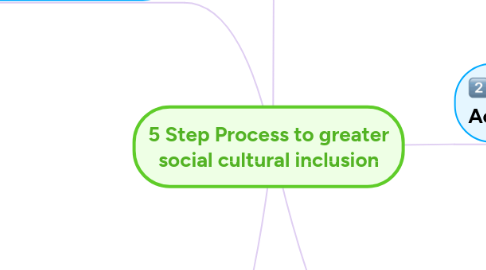
1. Involve students in group work
1.1. Who: Students
1.2. What: Involve the foreign students in group work to include a greater diversity in experience and opinion
1.3. When: When foreign students are linguistically capable of handling the work
1.4. Where: In class and at home (homework)
1.5. Why: It is important that the students assimilate into class as just regular students. It's also important that these students be able to use their experiences and culture to bring life and diversity to the assignments
1.6. How: When assignments are created that require group work, make sure that the foreign students have an active role in the group, not sitting on the sidelines waiting for the native speakers to tell them what to do or to do it for them.
2. Bring Korean/Chinese culture into the classroom
2.1. Who: Teachers and students
2.2. What: Bring up students cultural or language background though whatever subject is being taught
2.3. When: When appropriate
2.4. Where: In class
2.5. Why: It is important for the other students in the class to become familiar with the world outside of the USA. It is also important for students to be aware of sensitive issues facing those groups.
2.6. How: Depending on the subject being taught, there might be different ways to infuse the foreign culture with our own
2.6.1. Examples
2.6.1.1. Science: there might be an appropriate time to bring into discussion the differences between Chinese and Western medicine
2.6.1.2. Social studies: Discussions of economy/politics/societal rules/etc in comparing Korea and China to each other and to the USA
2.6.1.3. History: Discussing the relationships between South Korea and Noth Korea and China, focusing on the USA
3. Identify Students
3.1. Who: Teachers
3.2. What: Finding what students are from either Korea or China and finding out their personal situations
3.3. When: As soon and as early as possible to get them the help they might need
3.4. Where: At school and at home
3.5. Why: Its important for teacher to know more about the students situations and what kind of problems are they facing.
3.6. How: Looking for signs of struggling with the language, or perhaps by hearing a accent different than the other students.
4. Focus on Language Acquisition
4.1. Who: Teachers
4.2. What: Making sure students have the linguistic capabilities needed to keep up with their native speaking peers.
4.3. When: Immediately after identifying the students who may need help
4.4. Where: In class, after class (perhaps special sessions)
4.5. Why: It is important for any student to be able to grasp the language being used in class.
4.6. How:
4.6.1. Before giving a class, prepare and distribute word lists of terms that will be used in class. Give non-native students a chance to look up these words and understand them in class.
4.6.2. After classes, set aside time (perhaps a whole period) where you can go through review with the students in a more intimate setting, where you can really check to make sure they are getting the information that they need

